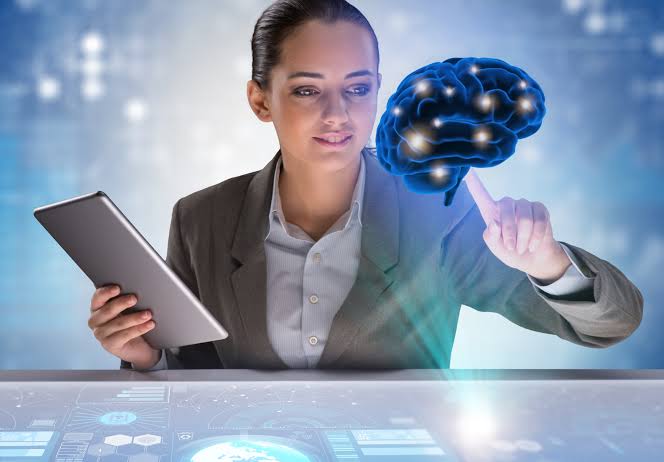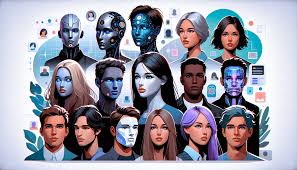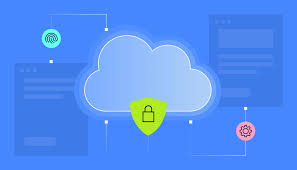
The Future of Learning: AI-Powered Classrooms
AI-powered classrooms are reshaping education by offering personalized learning experiences, intelligent tutoring, and real-time data analytics. These systems boost student engagement, empower teachers, and make education more inclusive and career-oriented. While ethical and infrastructural challenges remain, the future of learning lies in harmonizing human instruction with artificial intelligence.
✨ Raghav Jain

Introduction
Education is evolving faster than ever. Gone are the days of chalkboards and one-size-fits-all teaching. The future is here—and it’s powered by Artificial Intelligence (AI). AI in classrooms is not just about robots or digital tools. It’s about smarter, personalized, efficient learning experiences that understand each student’s pace, preferences, and needs.
AI-powered classrooms combine data, automation, and intelligence to create dynamic, interactive learning environments. They enhance teaching, personalize learning paths, and prepare students for the real world in a tech-driven age.
In this article, we’ll explore how AI is transforming classrooms, the benefits, the science behind the shift, practical applications, daily integration tips, and future trends in AI education. The future of education is being fundamentally reshaped by the integration of Artificial Intelligence (AI), moving from the traditional, one-size-fits-all classroom model to a dynamic, personalized, and hyper-efficient learning environment. This transformation, often referred to as AI-powered classrooms, is not about replacing human teachers but about augmenting their capabilities, freeing them from mundane administrative tasks and empowering them to focus on what matters most: mentoring, building relationships, and fostering critical thinking and social-emotional growth. At the core of this revolution is the ability of AI to analyze vast amounts of data on student performance, learning pace, and preferences, thereby creating highly tailored educational experiences that adapt to the unique needs of each individual learner. This personalized approach, which was once the exclusive domain of expensive private tutors, is now becoming scalable and accessible, promising to level the global learning curve and democratize access to high-quality education.
AI's role in the classroom begins with personalized learning paths and adaptive content. Platforms like DreamBox, Smart Sparrow, and CK-12 use machine learning algorithms to assess a student's current understanding in real-time and dynamically adjust the curriculum, difficulty of exercises, and learning materials to ensure they are challenged at an appropriate level. For a student struggling with a particular math concept, the AI might provide more practice problems, offer video tutorials from a different perspective, or break down the concept into smaller, more manageable steps. For an advanced student, the system might offer more complex problems or introduce new, related topics to maintain engagement. This continuous, data-driven feedback loop ensures that no student falls through the cracks and that every learner can master concepts at their own pace, leading to improved academic outcomes and greater student engagement.
Beyond adaptive learning, AI-powered classrooms also feature intelligent tutoring systems and chatbots. These tools act as round-the-clock teaching assistants, providing students with immediate, personalized feedback on their work and answering questions outside of class hours. Tools like OpenAI's new "Study Mode" guide students with probing, Socratic questions to help them build a deeper understanding of a topic, encouraging active learning over passive information consumption. These systems can help with everything from reviewing essays and providing grammar corrections to guiding students through a step-by-step solution to a complex problem, all while providing data to the teacher about where students are getting stuck. This constant, on-demand support helps to reduce student frustration and fosters independent problem-solving skills, allowing students to learn at any time and in any place.
For teachers, AI is a powerful ally that automates a significant portion of their workload. Automated administrative tasks such as grading multiple-choice quizzes, creating assessments, tracking attendance, and generating reports are now being handled by AI, freeing up precious time for teachers to focus on meaningful interactions with students. Generative AI tools, like those from Canva Magic Write and Eduaide.Ai, can assist teachers in creating engaging lesson plans, activities, presentations, and discussion prompts with just a simple text input. This allows educators to become more efficient, creative, and responsive to their students' needs. The data analytics generated by AI platforms also provide teachers with invaluable insights into classroom dynamics and learning trends, allowing them to identify common learning gaps, pinpoint at-risk students, and refine their teaching strategies to be more effective and targeted. This shift transforms the teacher's role from a sole dispenser of information to a facilitator of learning, a mentor, and a collaborator.
However, the implementation of AI in education is not without its significant challenges and ethical considerations. There is the risk of over-reliance on technology, which could potentially diminish critical thinking and problem-solving skills if students use AI as a shortcut to get answers instead of a tool for learning. Data privacy and security are paramount concerns, as AI systems require vast amounts of personal student data, and a breach could have severe consequences. Furthermore, the algorithms themselves can be biased if the data they are trained on is flawed, which could lead to unfair outcomes for certain students. High implementation costs and the need for comprehensive teacher training can also create a "digital divide," where well-funded schools have access to the best AI tools, while underfunded schools and students are left at a disadvantage. There is also the crucial debate about academic integrity, with new tools constantly being developed to detect AI-generated work, and educators needing to adapt their assignments to focus on skills that cannot be easily replicated by machines. The future of learning, therefore, will be a careful balancing act: leveraging the immense power of AI for personalization and efficiency while consciously preserving the irreplaceable human element of teaching, mentorship, and ethical guidance to ensure a more equitable and effective educational experience for all.
What Are AI-Powered Classrooms?
An AI-powered classroom integrates Artificial Intelligence tools into teaching and learning. These tools use data and algorithms to analyze student behavior, provide real-time feedback, and personalize learning paths.
Key components include:
- AI tutors & chatbots for 24/7 learning support
- Learning analytics to track performance
- Speech recognition and automated grading
- Personalized learning platforms
- Virtual Reality (VR) and Augmented Reality (AR) for immersive learning
It’s not about replacing teachers—it’s about augmenting their capabilities with intelligent technology.
Why Traditional Classrooms Need a Tech Upgrade
Education faces several challenges:
- One-size-fits-all Teaching
- Every student learns differently, but most classrooms teach the same content the same way.
- Teacher Burnout
- Grading, lesson planning, and student tracking consume time and energy.
- Lack of Engagement
- Students today are digital natives. Static textbooks no longer capture attention.
- Slow Feedback Loops
- By the time teachers review homework or tests, learning gaps have already widened.
AI bridges these gaps by offering real-time, customized, and engaging solutions.
How AI is Transforming Education
1. Personalized Learning
AI platforms adapt content to match a student's learning speed, style, and skill level.
✅ Slower learners get extra help
✅ Advanced learners move ahead without waiting
2. Automated Grading and Assessments
AI saves teachers hours by instantly evaluating multiple-choice, essays, and even coding assignments.
✅ Reduces errors
✅ Gives feedback instantly
3. Virtual Class Assistants
AI chatbots answer student doubts anytime, explain concepts, or even quiz them.
✅ Encourages independent learning
✅ Reduces teacher load
4. Predictive Analytics for Early Intervention
AI tracks learning behavior and predicts if a student might fall behind—allowing teachers to act early.
✅ Improves student outcomes
✅ Reduces dropouts
5. Smart Content Creation
AI helps create quizzes, flashcards, and even lesson plans.
✅ Saves time
✅ Keeps content updated and relevant
Benefits of AI in the Classroom
- Individualized Attention
- Each student gets a unique learning path suited to their needs.
- More Teaching Time
- Teachers can focus more on mentoring, creativity, and emotional development.
- Real-Time Feedback
- Students get instant input on what they did right or wrong—improving understanding.
- Inclusive Learning
- AI tools help students with disabilities—speech-to-text, visual aids, or language support.
- Engaged Learning Experience
- Gamified content, VR-based lessons, and interactive AI tools make learning exciting.
- Global Access
- AI enables remote learning across borders, making quality education more accessible.
Daily AI Integration in Classrooms
Morning Routine
- AI-powered attendance (face/speech recognition)
- Students get daily learning targets via apps
Lesson Time
- Adaptive platforms assign personalized content
- AI quizzes after every topic to test understanding
Post-Class Review
- Chatbot available for doubt clearing
- Auto-generated homework based on progress
Teacher Tasks
- Analytics dashboard to track student performance
- AI suggests which students need extra support
Weekly AI Classroom Practices
✅ Use AI tools like Khan Academy, Century Tech, or Duolingo for subject-specific learning
✅ Run a VR-based interactive lesson (e.g., virtual museum tour)
✅ AI-generated personalized tests every Friday
✅ Teacher review of weekly student analytics report
✅ 1 chatbot-based revision session
✅ Use AI for lesson planning next week
Challenges & Solutions
❌ Fear of Replacing Teachers
✅ AI supports, not replaces. Teachers are still the emotional and moral guides.
❌ Data Privacy Concerns
✅ Schools must follow strict data protection laws and parental consent.
❌ Tech Accessibility
✅ Governments and NGOs can help bridge digital divides with smart devices and infrastructure.
❌ Teacher Training Gaps
✅ Schools must train educators to use AI tools confidently and ethically.
AI in Education: Myths Busted!
“AI will replace teachers.”
→ False! Teachers are irreplaceable. AI just automates repetitive tasks.
“AI means students will learn alone.”
→ Not true. AI enhances teacher-student interaction by freeing up time for real discussion.
“AI is only for tech subjects like coding or math.”
→ Wrong. AI helps in languages, arts, history, and even moral education.
“Only rich schools can afford AI.”
→ False. Many tools are free or low-cost and accessible via smartphones.
“AI is just a trend—it will fade.”
→ Absolutely not. AI is shaping the future across all industries, including education.
Sample Day in an AI-Powered Classroom
8:00 AM – Arrival
Face-recognition attendance + AI-generated daily goals
9:00 AM – Math Class
Adaptive platform adjusts questions to each student’s level
Instant hints from chatbot for stuck students
10:30 AM – History Class
VR-based lesson on Ancient Egypt
Students explore pyramids virtually
12:00 PM – Homework Assignment
Auto-generated questions tailored to each student
AI suggests 2-minute explainer video links
2:00 PM – Feedback
AI sends progress report to teachers and parents
Identifies students who need attention
Future Trends in AI-Powered Learning
- Emotion AI: Recognizes if students are bored or confused using facial cues
- Voice AI: Real-time spoken feedback, accents adaptation
- Metaverse Classrooms: Full immersion in history, science, or geography
- AI-Powered Exams: Real-time proctoring and adaptive questions
- Multilingual Learning AI: Teaches in native languages with instant translation
Conclusion
The classrooms of tomorrow are not distant—they’re already unfolding. AI-powered education is more than a technological trend. It’s a transformational shift in how we teach, learn, and grow.
By blending the emotional intelligence of teachers with the analytical power of AI, we create an education system that is smarter, faster, fairer, and more engaging. From personalized paths to immersive experiences, students are now empowered to learn in ways that match their unique strengths.
Whether you're a teacher, student, or parent—it’s time to embrace this future. Because the world is changing, and learning must evolve with it.
Educate smarter. Engage deeper. Learn faster.
AI is not the future—it’s the new present of learning.
Q&A Section
Q1:- What are AI-powered classrooms and how do they differ from traditional ones?
Ans :- AI-powered classrooms use intelligent systems to personalize learning, automate tasks like grading, and adapt in real-time to each student's pace and performance, unlike traditional one-size-fits-all teaching.
Q2:- How does AI personalize education for individual students?
Ans :- AI analyzes students’ strengths, weaknesses, and progress, then delivers customized content, exercises, and feedback tailored to their learning style and needs.
Q3:- What role do AI tutors and chatbots play in modern classrooms?
Ans :- AI tutors and chatbots provide instant support, answer questions, explain difficult concepts, and guide students outside of classroom hours—enhancing learning accessibility and engagement.
Q4:- Can AI help teachers become more effective? If so, how?
Ans :- Yes, AI helps by automating administrative tasks, analyzing student data for insights, suggesting interventions, and freeing up teachers to focus on mentorship and creative teaching.
Q5:- How is AI improving accessibility in education?
Ans :- AI tools offer real-time translation, speech-to-text, visual recognition, and adaptive interfaces, helping students with disabilities or language barriers to learn effectively.
Q6:- What are some ethical concerns with using AI in classrooms?
Ans :- Concerns include data privacy, biased algorithms, over-reliance on automation, and the potential for widening the digital divide if access is unequal.
Q7:- How can AI prepare students for future careers?
Ans :- AI integrates career-oriented learning by simulating real-world scenarios, offering skills-based assessments, and guiding students toward high-demand roles with personalized learning paths.
Q8:- Will AI replace human teachers in the future?
Ans :- No, AI will assist rather than replace teachers—enhancing their role by handling repetitive tasks and offering insights, while teachers provide empathy, creativity, and human connection.
Q9:- How is AI used to monitor and assess student progress?
Ans :- AI tracks performance data continuously, provides instant feedback, predicts outcomes, and suggests tailored improvements—ensuring proactive rather than reactive learning support.
Q10:- What infrastructure is needed to implement AI-powered classrooms effectively?
Ans :- Schools need reliable internet, smart devices, trained educators, data protection protocols, and AI-integrated learning platforms to successfully transition to AI-powered classrooms.
Similar Articles
Find more relatable content in similar Articles
Explore Other Categories
Explore many different categories of articles ranging from Gadgets to Security
Smart Devices, Gear & Innovations
Discover in-depth reviews, hands-on experiences, and expert insights on the newest gadgets—from smartphones to smartwatches, headphones, wearables, and everything in between. Stay ahead with the latest in tech gear
Apps That Power Your World
Explore essential mobile and desktop applications across all platforms. From productivity boosters to creative tools, we cover updates, recommendations, and how-tos to make your digital life easier and more efficient.
Tomorrow's Technology, Today's Insights
Dive into the world of emerging technologies, AI breakthroughs, space tech, robotics, and innovations shaping the future. Stay informed on what's next in the evolution of science and technology.
Protecting You in a Digital Age
Learn how to secure your data, protect your privacy, and understand the latest in online threats. We break down complex cybersecurity topics into practical advice for everyday users and professionals alike.
© 2025 Copyrights by rTechnology. All Rights Reserved.

